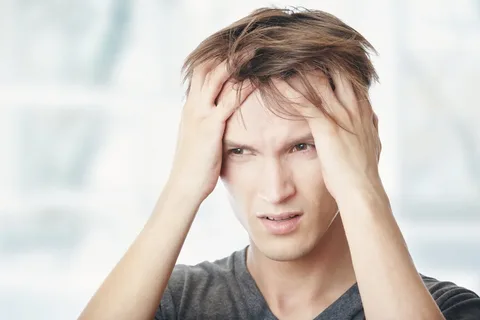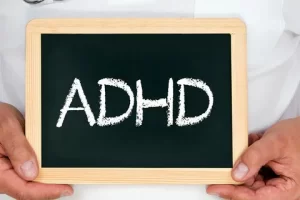Anxiety Disorders: Types, Diagnosis, and Treatment Options

Anxiety is a natural response to stress and can be beneficial in some situations. It can alert us to dangers and help us prepare and pay attention. However, when anxiety becomes a constant or overwhelming force, it may be classified as an anxiety disorder. Anxiety disorders are the most common mental health disorders, affecting millions of people worldwide. This article explores the various types of anxiety disorders, how they are diagnosed, and the treatment options available.
Understanding Anxiety Disorders
Anxiety disorders are a group of mental health conditions characterized by excessive fear or worry. Unlike occasional anxiety, these disorders can be persistent, overwhelming, and interfere with daily activities. The main types of anxiety disorders include Generalized Anxiety Disorder (GAD), Panic Disorder, Social Anxiety Disorder, Specific Phobias, Obsessive-Compulsive Disorder (OCD), and Post-Traumatic Stress Disorder (PTSD).
Types of Anxiety Disorders
- Generalized Anxiety Disorder (GAD)
Generalized Anxiety Disorder is marked by chronic, exaggerated worry and tension, even when there is little or nothing to provoke it. People with GAD often anticipate disaster and may be overly concerned about health, money, family, work, or other issues. This worry is often accompanied by physical symptoms such as fatigue, muscle tension, and headaches. - Panic Disorder
Panic Disorder is characterized by sudden and repeated episodes of intense fear accompanied by physical symptoms that can include chest pain, heart palpitations, shortness of breath, dizziness, or abdominal distress. These episodes, known as panic attacks, can occur unexpectedly and leave the person fearing the next attack. - Social Anxiety Disorder
Social Anxiety Disorder, or social phobia, involves an intense fear of social situations. Individuals with this disorder fear being judged, embarrassed, or humiliated in public. This can significantly interfere with daily activities and the ability to develop and maintain relationships. - Specific Phobias
Specific Phobias involve an intense, irrational fear of specific objects or situations, such as heights, flying, or spiders. This fear is out of proportion to the actual danger posed and can lead to avoidance behavior that limits daily functioning. - Obsessive-Compulsive Disorder (OCD)
OCD is characterized by unwanted and intrusive thoughts (obsessions) that lead to repetitive behaviors or mental acts (compulsions). These compulsions are often performed to reduce the anxiety caused by the obsessions. For example, a person with a fear of germs may wash their hands excessively. - Post-Traumatic Stress Disorder (PTSD)
PTSD can develop after exposure to a traumatic event, such as a natural disaster, serious accident, terrorist act, war/combat, or rape. Symptoms include flashbacks, nightmares, severe anxiety, and uncontrollable thoughts about the event. PTSD can impair daily functioning and quality of life.
Diagnosis of Anxiety Disorders
Diagnosing anxiety disorders involves a comprehensive assessment that includes a detailed medical and psychological history, as well as specific criteria outlined in the Diagnostic and Statistical Manual of Mental Disorders (DSM-5).
Step-by-Step Diagnosis Process
- Initial Evaluation
The diagnostic process often begins with a visit to a primary care physician, who can rule out physical conditions that may be causing anxiety symptoms. The doctor may perform a physical examination and order lab tests to ensure that the anxiety is not due to an underlying medical issue. - Psychological Assessment
If no physical cause is found, the doctor may refer the patient to a mental health professional, such as a psychologist or psychiatrist. This specialist will conduct a psychological assessment, which typically includes a detailed interview and standardized questionnaires. These tools help to evaluate the nature, duration, and intensity of the anxiety symptoms. - Criteria Comparison
The mental health professional will compare the patient’s symptoms with the criteria for anxiety disorders in the DSM-5. For instance, for a diagnosis of GAD, the DSM-5 criteria include excessive anxiety and worry occurring more days than not for at least six months, along with at least three associated symptoms (e.g., restlessness, fatigue, difficulty concentrating, irritability, muscle tension, sleep disturbances). - Differential Diagnosis
Anxiety symptoms can overlap with other mental health conditions, such as depression or bipolar disorder. Therefore, it’s crucial to distinguish anxiety disorders from other potential diagnoses. The clinician will consider the patient’s complete mental health history and any co-occurring conditions. - Functional Assessment
The impact of anxiety on daily functioning is a key factor in diagnosis. The clinician will assess how the anxiety symptoms affect the patient’s ability to work, socialize, and manage everyday tasks.
Treatment Options for Anxiety Disorders
Treatment for anxiety disorders is highly individualized and can include a combination of psychotherapy, medication, and lifestyle changes. The goal of treatment is to reduce symptoms, improve quality of life, and help the individual function more effectively.
Psychotherapy
Psychotherapy, or talk therapy, is often the first line of treatment for anxiety disorders. Various forms of psychotherapy have been shown to be effective in treating anxiety.
- Cognitive-Behavioral Therapy (CBT)
CBT is a structured, goal-oriented type of therapy that focuses on identifying and changing negative thought patterns and behaviors. CBT helps individuals challenge irrational fears and develop healthier coping mechanisms. Techniques used in CBT include exposure therapy, cognitive restructuring, and relaxation exercises. - Exposure Therapy
Exposure therapy is a component of CBT that involves gradually exposing individuals to feared situations or objects in a controlled environment. The goal is to reduce the fear response over time. This method is particularly effective for phobias and PTSD. - Acceptance and Commitment Therapy (ACT)
ACT focuses on accepting negative thoughts and feelings rather than fighting them. It encourages individuals to commit to actions that align with their values, even in the presence of anxiety. Mindfulness and behavioral change strategies are key components of ACT. - Dialectical Behavior Therapy (DBT)
Originally developed for borderline personality disorder, DBT has been adapted to treat other conditions, including anxiety disorders. DBT combines CBT with mindfulness practices and focuses on teaching skills to manage emotions, tolerate distress, and improve relationships.
Medication
Medication can be an effective component of treatment for anxiety disorders, especially when symptoms are severe. Several types of medications are commonly prescribed:
- Selective Serotonin Reuptake Inhibitors (SSRIs)
SSRIs, such as fluoxetine (Prozac) and sertraline (Zoloft), are often the first choice for treating anxiety disorders. They work by increasing levels of serotonin in the brain, which can improve mood and reduce anxiety. - Selective Norepinephrine Reuptake Inhibitors (SNRIs)
SNRIs, such as venlafaxine (Effexor) and duloxetine (Cymbalta), are another class of antidepressants that can be effective for anxiety. They increase levels of both serotonin and norepinephrine, which helps regulate mood and anxiety. - Benzodiazepines
Benzodiazepines, such as diazepam (Valium) and alprazolam (Xanax), are fast-acting medications that can provide quick relief of anxiety symptoms. However, they are typically used on a short-term basis due to the risk of dependence and withdrawal issues. - Beta-Blockers
Beta-blockers, like propranolol, are sometimes used to manage physical symptoms of anxiety, such as rapid heartbeat and tremors. They are particularly useful for situational anxiety, such as performance anxiety. - Buspirone
Buspirone is an anti-anxiety medication that can be used for long-term treatment of GAD. It has fewer side effects and a lower risk of dependence compared to benzodiazepines.
Lifestyle Changes and Self-Help Strategies
In addition to professional treatment, several lifestyle changes and self-help strategies can help manage anxiety symptoms.
- Regular Exercise
Physical activity can reduce anxiety by increasing the production of endorphins, which are natural mood lifters. Exercise also helps to decrease muscle tension and improve sleep, both of which can reduce anxiety symptoms. - Healthy Diet
A balanced diet can impact mood and energy levels. Reducing caffeine and sugar intake, eating regular meals, and staying hydrated can help stabilize mood and reduce anxiety. - Mindfulness and Meditation
Mindfulness practices, such as meditation, deep breathing exercises, and yoga, can help individuals stay grounded and reduce anxiety. These practices encourage focusing on the present moment and can help break the cycle of worrying about the future or ruminating on the past. - Adequate Sleep
Poor sleep can exacerbate anxiety symptoms. Establishing a regular sleep routine, creating a comfortable sleep environment, and avoiding stimulants before bedtime can improve sleep quality and reduce anxiety. - Social Support
Building a strong support network of friends, family, or support groups can provide emotional support and reduce feelings of isolation. Talking about one’s feelings with trusted individuals can also help alleviate anxiety. - Time Management
Effective time management skills can reduce anxiety by preventing last-minute stress and helping individuals feel more in control of their daily tasks. Prioritizing tasks, breaking them into smaller steps, and setting realistic goals can make them more manageable.
Emerging Treatments and Research
Research in the field of anxiety disorders is ongoing, and new treatments are continually being developed and tested.
- Neurostimulation Techniques
Techniques such as transcranial magnetic stimulation (TMS) and deep brain stimulation (DBS) are being explored as potential treatments for anxiety disorders. These methods involve stimulating specific areas of the brain to alter neural activity and reduce symptoms. - Virtual Reality Therapy
Virtual reality (VR) therapy is an emerging tool for exposure therapy. It allows individuals to confront their fears in a controlled,





